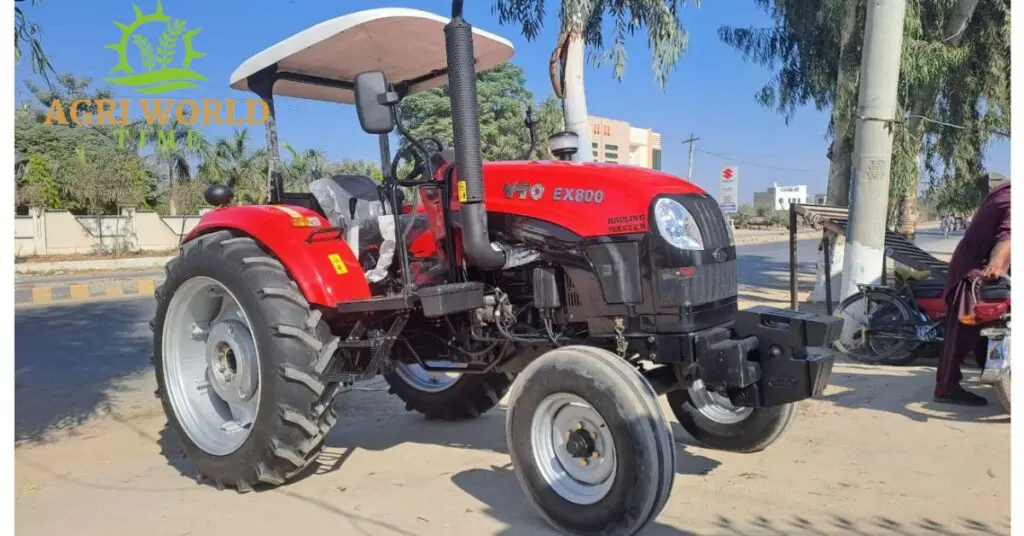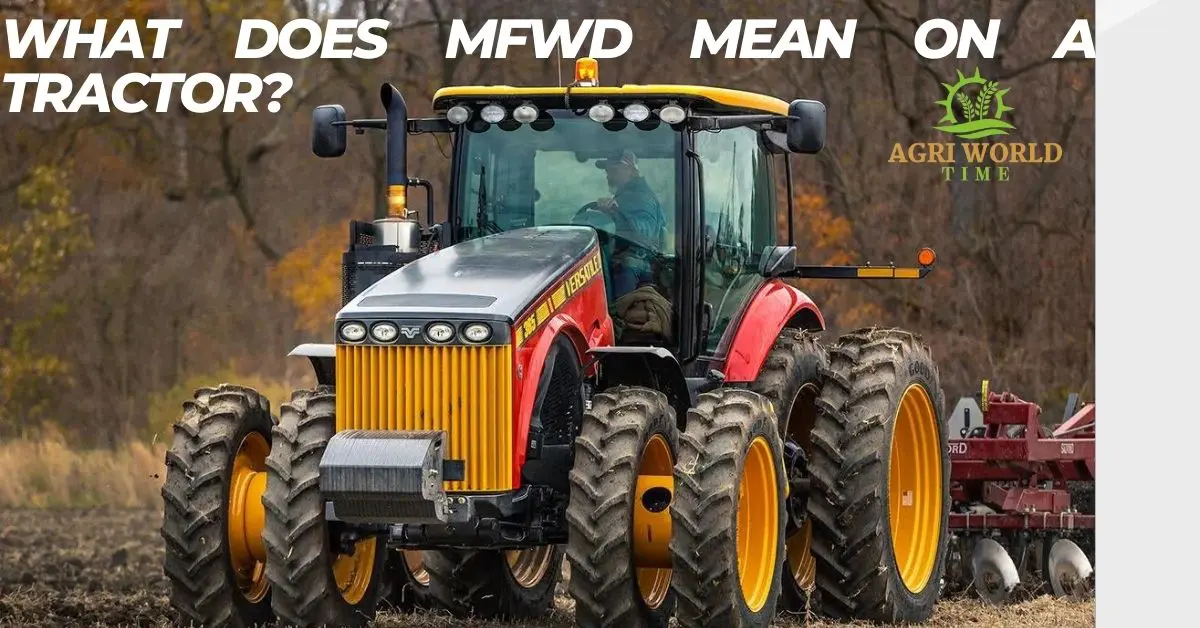Have you ever seen the term “MFWD” in a tractor’s specifications or heard it from a farmer or a mechanic? You might wonder what it means and how it affects the tractor’s performance. In this post, we’ll explain what MFWD stands for and how it works. We’ll also discuss the advantages and disadvantages of using MFWD tractors in different situations.
Whether you’re a farmer, a landscaper, or just someone interested in the mechanics of tractors, this post will provide you with valuable insights and knowledge about one of the most common drivetrain systems used in modern agriculture. Let’s get started!
What is meant by MFWD?
Mechanical Front Wheel Drive (MFWD) is a type of drivetrain system. It powers the front wheels of a tractor through a separate automated gearbox or transfer case. The system allows the front wheels to rotate at different speeds than the rear wheels. This improves traction, stability, and maneuverability in various terrains and weather conditions.
Advantages of MFWD:
Improved traction:
Improved traction on slippery or uneven surfaces, such as wet soil, snow, ice, or hillsides.
Weight distribution
Better weight distribution and balance, which reduces slippage, tire wear, and fuel consumption.
Steering and control
Enhanced steering and control, especially in tight turns, corners, or obstacles.
Increase Efficiency
Increase productivity and efficiency, as MFWD tractors can handle larger loads. The tractor operates at higher speeds and covers more ground in less time.
Disadvantages of MFWD:
Higher initial cost
Higher initial cost compared to 2WD tractors. It is due to the extra mechanical components and complexity of the system.
More maintenance
More maintenance and repair needs, as MFWD tractors have more parts that can wear out, leak, or malfunction.
Reduced ground clearance
Reduced ground clearance and maneuverability in certain conditions, such as rocky terrain, tall crops, or narrow paths.
Other wheel drive options
MFWD tractors offer many benefits in terms of traction and maneuverability. They are not the only type of drivetrain system available for tractors. There are some other wheel drive options. Now we’ll explore and compare them to MFWD tractors.
2WD (two-wheel drive) tractors:
2WD tractors are the simplest and most affordable type of tractor. They only have power going to the rear wheels. It can limit their traction and stability in certain conditions. However, 2WD tractors are suitable for small farms, orchards, or vineyards with relatively flat terrain.

4WD (four-wheel drive) tractors:
4WD tractors have power going to all four wheels. It provides more traction and pulling power than MFWD or 2WD tractors. They are often used for heavy-duty tasks, such as plowing, hauling, or excavating, where maximum traction is required. However, 4WD tractors can also be more expensive and complex than MFWD or 2WD tractors. It is not necessary for smaller operations or lighter tasks.
AWD (all-wheel drive) tractors:
AWD tractors have power going to all wheels at all times, which provides superior traction and stability compared to MFWD or 4WD tractors. They are often used in hilly or slippery terrain, such as vineyards, orchards, or golf courses. They are also used where precision and safety are essential. AWD tractors are more fuel-efficient than 4WD tractors. They can automatically adjust power delivery to each wheel based on the conditions. However, AWD tractors are more expensive and complex than MFWD or 4WD tractors.
What factors to consider when selecting the different types of wheel drive options for tractors?
Now that we’ve discussed the different types of wheel drive options for tractors. Let’s take a closer look at the factors to consider when selecting the right one for your farming needs.
Soil type:
It depends on the soil type you’re working with. You may need a tractor with more or less traction. For example, loose or sandy soil may require a tractor with more pulling power. Similarly, compact or clay soil requires a tractor with more stability.
Climate:
The climate and weather conditions in your area also affect the type of tractor you need. If you work in a wet or muddy environment, you need a tractor with better traction and grip. Conversely, if you work in a dry or dusty environment, you may need a tractor with more speed and power.
Slope:
The slope of your land affects the stability and safety of your tractor. If you work on hilly or steep terrain, you need a tractor with better control and traction.
Load capacity:
The weight you need to carry or tow can also affect the type of tractor you need. If you have heavy loads or equipment, you need a tractor with more power and torque.
Speed:
The speed of your work also affects your choice of a tractor. If you need to move quickly between fields or tasks, you need a tractor with more speed and agility.
Conclusion
Selecting the right wheel drive system for your tractor is an important decision. It can impact the efficiency and effectiveness of your farming operations. MFWD tractors offer a balance of versatility, maneuverability, and traction that make them a popular choice for many farmers. However, other options such as 2WD, 4WD, and AWD tractors also have their unique features and benefits. They may be more suitable for certain farming environments and tasks.
When choosing a wheel drive system for your tractor, consider factors like soil type, climate, slope, load capacity, speed, and more. Compare options based on performance, efficiency, cost, and maintenance. Research, consult experts, and test drive models to make an informed decision. Invest in a tractor that boosts productivity and profitability.
FAQs
What is MFWD on a tractor?
MFWD stands for Mechanical Front Wheel Drive. It is a type of wheel drive system that powers the front wheels of a tractor to provide improved traction and maneuverability.
What is the difference between MFWD and 4WD tractors?
MFWD tractors have power to the front wheels only when needed, while 4WD tractors have power to all four wheels all the time. 4WD tractors generally provide more traction and pulling power. They can be more complex to operate and maintain.
Are 2WD tractors still used today?
Yes, 2WD tractors are still used in many farming applications today. They are generally less expensive and easier to maintain than other wheel drive options. They may not provide as much traction or stability in certain conditions.
What are the typical applications for MFWD tractors?
MFWD tractors are versatile and can be used in a wide range of farming applications. It includes plowing, tilling, mowing, planting, and hauling. They are especially useful in environments with variable terrain and changing weather conditions.
How do I know which wheel drive system is right for my farming needs?
When selecting a wheel drive system for your tractor, consider factors such as soil type, climate, slope, load capacity, speed, and other criteria. Consult with experts and test drive different models to get a feel for their performance and features. Ultimately, the best wheel drive system for your needs will depend on your specific requirements and preferences.

